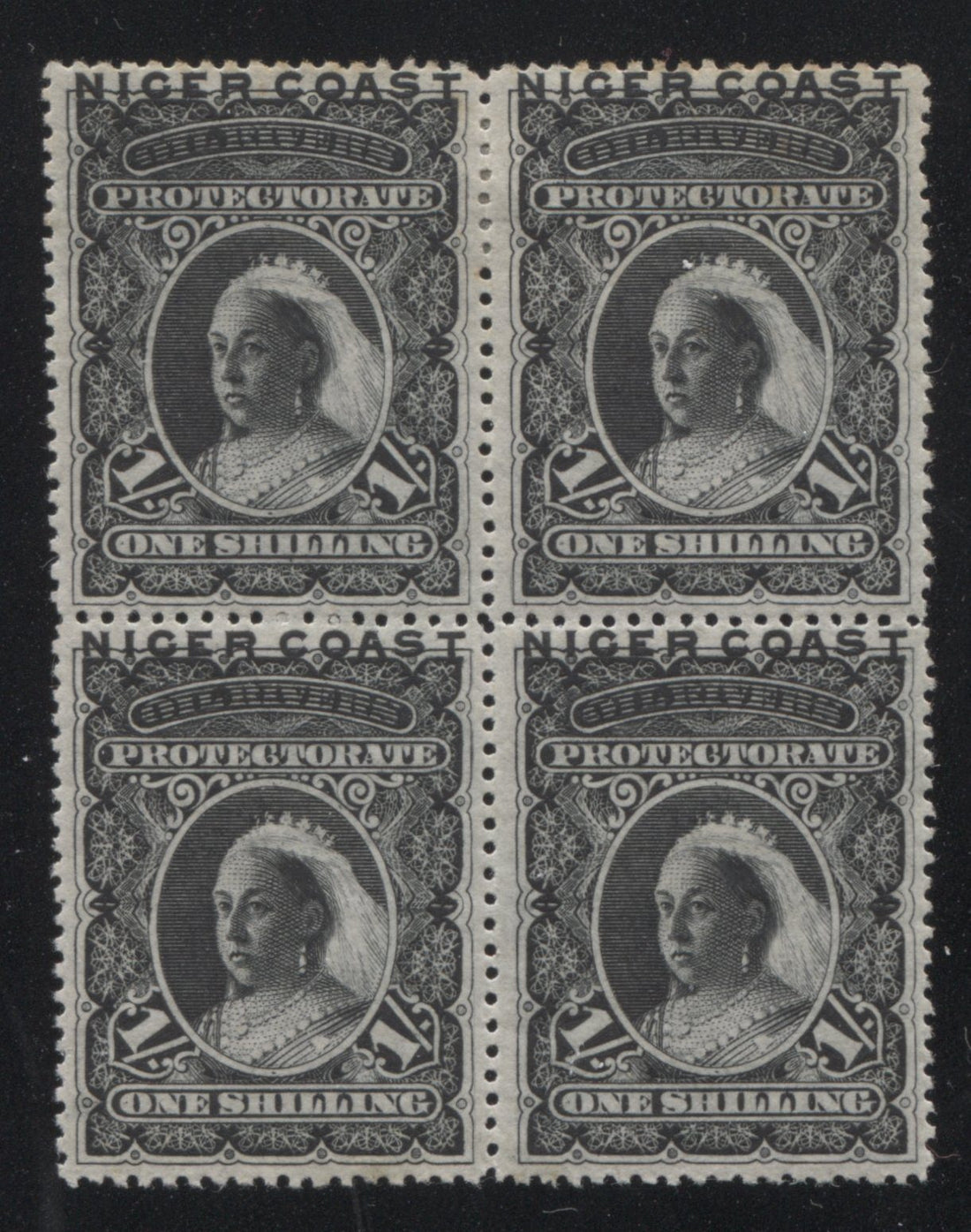In today's post, I explore the last value in this first Waterlow series, the 1 shilling black. I have many fewer of this value than the other values in the series, with 47 mint and used singles, and 1 block of 4.
There is really no variation in the shades of the stamp: the ink is a pure jet black. So, I will confine my discussion to the paper and gum, perforations, cancellations and plate flaws. As the stamps are black, the cancellations will not generally show up clearly in scans, so I will not be providing scans of these, but will instead provide details of the cancellations that are in my stock and leave it at that.
Paper and Gum Varieties
Like the other values in this set, I have noted that the stamps come on both horizontal and vertical wove papers. In both cases, there appear to be at least two types of each: a thin paper soft paper, through which you can generally see most of the design, a thin, hard paper, which is also translucent, and then a third type of wove paper that is a cream colour, and is more opaque. In terms of gum, the opaque paper and hard paper tend to have a colourless, thinner gum that has a satin sheen. The thinner, soft wove paper also comes with a glossy and crackly colourless gum. So, it would appear that the three main paper and gum types correspond to the three printings that were made of these stamps: June 2, 1893 (November according to Gibbons), January 9, 1894 and March 12, 1894.
The following scans show these papers and gums fairly clearly:
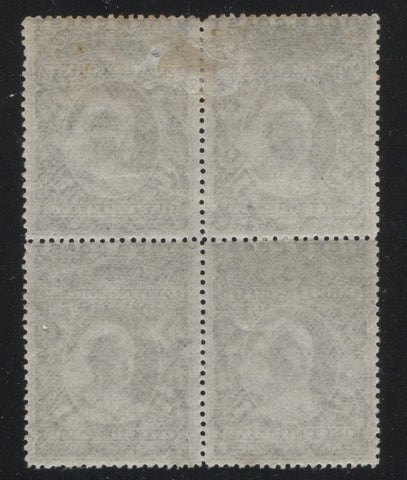
This block of 4 shows the medium vertical wove paper, with coarse vertical mesh, and thinner satin gum.

The stamp in the middle is the thinner vertical wove with coarse mesh. Then there is a slightly thicker wove paper, with fine mesh, which is on the left, and finally a thicker, creamier wove paper, also with fine mesh.

This scan shows the shinier colourless gum that is found on the medium wove paper, on the left stamp, and the smooth, satin gum that is found on the thicker, creamier wove paper, is shown on the right.
The direction of the weave would appear to merely be a function of the direction the sheets were fed into the presses, as all three paper and gum varieties can be found with the horizontal wove paper, as shown in the following scan:
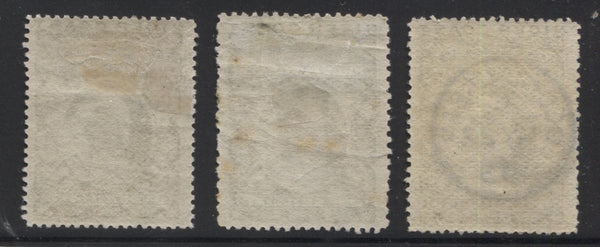
The thinner paper and satin gum is in the middle, the shinier gum and medium wove paper is on the left, and thicker, more opaque paper is on the right.
Cancellations
In terms of cancellations, I have noted a much narrower range of postmarks on this value as compared to other stamps of the series:
- Old Calabar CDS with time code C is the most common.
- Old Calabar River CDS with time code A is the next most common.
- Old Calabar squared circle is next, followed by.
- Benin River CDS in red.
I have not seen examples of Warri, Forcados, Sombiero River, Brass, Opobo, or any of the other villages that we usually see on these. I am not sure why, but I would suspect that it is because this value saw very little genuine use, and that many of the Old Calabar cancels are actually cancelled-to-order remainders.
Plate Flaws and Re-Entries
Ince and Osborne list six specific positions with re-entries and flaws on this stamp, and two markings that appear on every stamp, as well as two re-entries that occur on a handful of positions. To illustrate the markings and flaws that appear on every stamp as well as one that occurs on several positions, I will begin with this block of 4 mint stamps that comes from positions 21-22 and 26-27 from the 30 subject sheet:

I was able to identify this as coming from positions 21-22 and 26-27 because of the the fact that the outer frameline on the right side of each stamp shows some doubling, as seen in the larger pictures below:

This is a close up of the upper left stamp, position 21. If you look at the outer right frameline, you can see doubling just to the right of "ATE", and in the very upper right corner. You can also see a fine line grazing the top of the "AT" in "ATE". This line is present to an extent on every stamp in the sheet, and it is actually a full line that passes through the entire word.
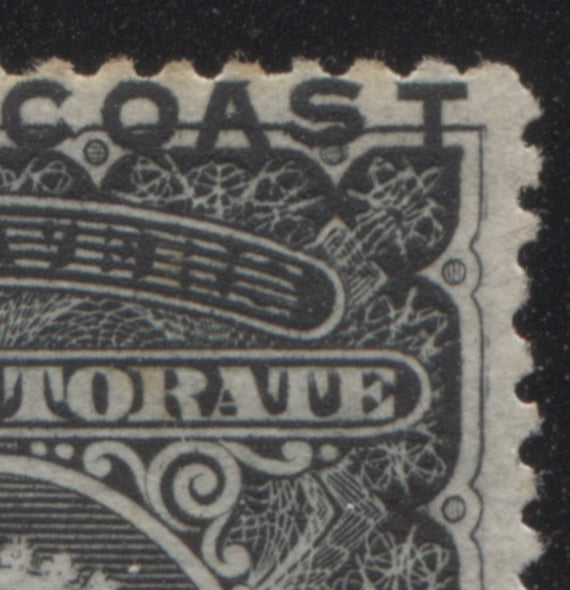
This is the upper right stamp in the block. The horizontal line through "Protectorate" is present on this, but it is much thinner, so that it does not show up in this scan. However, you can see the same doubling of the upper right frameline that was present on the previous stamp.
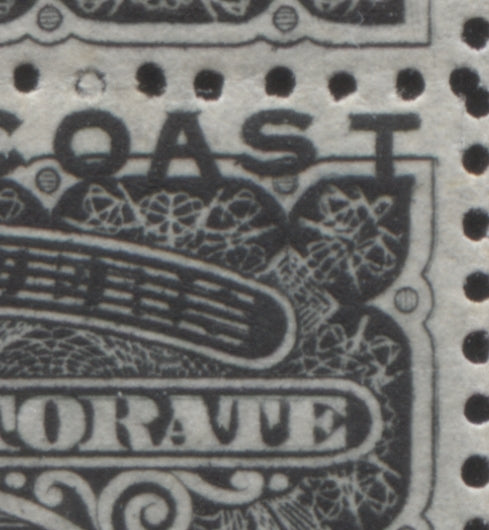
This is the bottom left stamp in the block. Here, both the doubling at the right and the line through "Protectorate" is clearly visible.
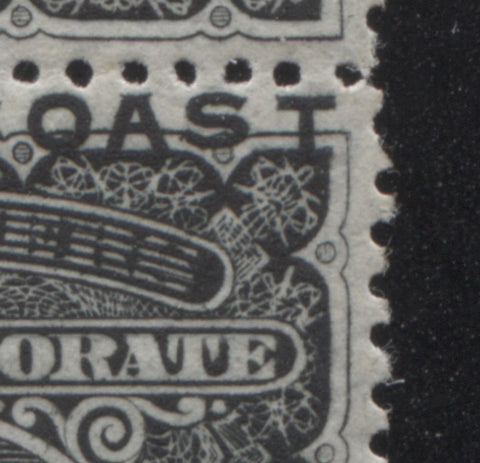
Lastly, this is the bottom right stamp in the block. Here, neither the line, nor the doubling is as obvious. A fine line is visible through "TOR", though it does not show up clearly here. On the right frameline you can just see doubling right in the corner.
So, it is this doubling that is present on positions 1, 7, 8, 9, 12, 13, 15, 17, 20, 21, 22, 23, 25, 26 and 27. Similar doubling is present on the other side, being the left side, on positions 1, 3, 7, 8, 9, 12, 13, 16, 17, 20, 21 and 28. This means that positions 1, 7, 8, 9, 12, 13, 17, 20, and 21 should show the doubling on both sides, though in this particular instance it is missing on the position 21 stamp that is in the above block.
The high resolution scans show a stamp from one of these positions, where the doubling is present on both sides:
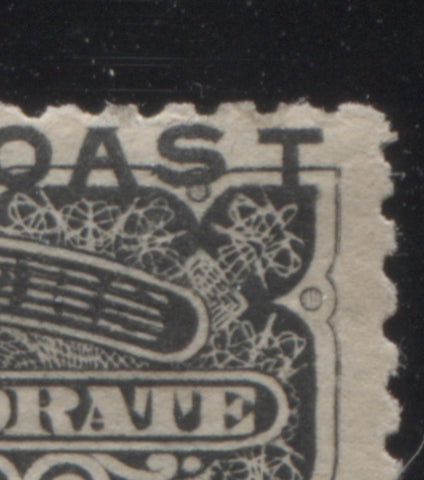
This is the right side of the stamp showing the doubling at upper right. Again, the horizontal line through "Protectorate" is thin and light, so that it is not clear. However, notice the circle under "S" of "Coast". It is partially doubled too. Interestingly this is not mentioned by Ince and Osborne. However, this doubling is present on all the stamps I examined where this doubling is present.
Now, here is the left side of that same stamp:

This is a really nice example that clearly shows the doubling of the upper left frameline, but also shows clear doubling of the circle under the "I" of "Niger". Again, this doubling of the circle is not mentioned by Ince or Osborne.
The markings that are present on all stamps in the sheet, besides the line through "Protectorate" are shown in the following scan:
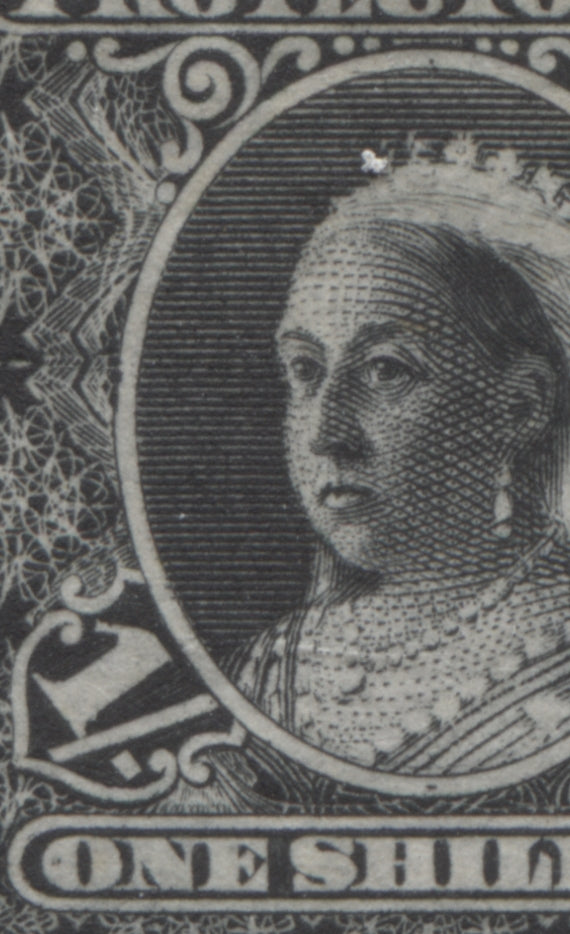
What you are looking for here are the dots in the middle of the portrait oval at top and bottom, as well as in the "O" of "One". These are present in all stamps.
That leaves us with those markings that are peculiar to a particular position, which are listed by Ince and Osborne as:
- Position 5 - An additional stroke in the loop of "P" of "Protectorate".
- Position 14 - Outer right hand top frameline is double, and a second doubling line extends above the upper horizontal frameline.
- Position 15 - There is a stroke of colour resembling a comma inside the right arm of the "A" of "Protectorate".
- Position 18 - There is a large spot of colour to the left of the foot of the "T" of "Coast", the right serif on the foot of "P" of "Protectorate" is missing, and a lot of small dots and scratches on this stamp.
- Position 22 - There is a small vertical line joining the top and bottom of the oval surrounding "Protectorate", right above the loop of the "P".
- Position 24 - There are two horizontal lines crossing the shading lines of the Queen's veil at centre right, and extending into the margin. The letters "PRO" of "Protectorate" are all malformed: The "P" has an extra stroke, the "R" is woolly, and the "O" has a bulge at right.
The first of these that I can illustrate is the line on position 22, which was present in the block that I just illustrated above:
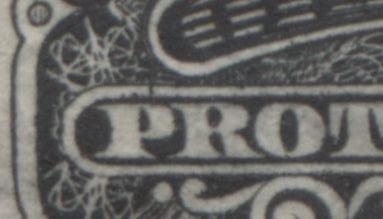
This is position 22, showing the short vertical line above the "P".
Unfortunately, I do not have examples of positions 5, 14 and 18. However, I do have two stamps from positions 15 and 24, which show the plate varieties very nicely:
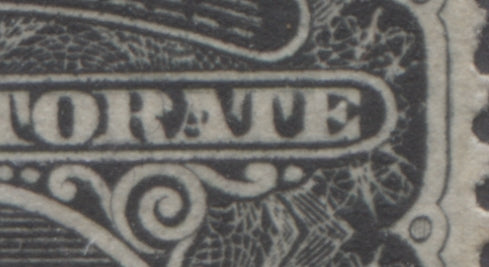
This is the position 15, comma inside the A. Interestingly, there is also a small horizontal stroke inside the upper part of the portrait oval, which Osborne and Ince did not mention:

The last stamp I can show you is position 24, which shows the lines in the veil and the distorted "PRO":
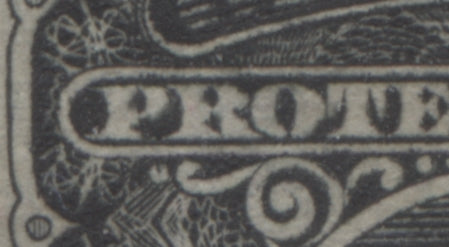
Here you can see the extra stroke inside the "P", the rough appearance of the "R" and the bulge on the right side of the "O".
Perforations
Gibbons lists a surprising 5 different perforations of this stamp, making it the largest number of listed varieties behind the 2d. They list 14.5-15, 14.5-15 comp. 12-13, 13.5-14, 13.5-14 comp. 12-13, perf 14.5-15 comp. 13.5-14. This last perforation measurement is peculiar to this value. In terms of scarcity, judging by the Gibbons prices it would seem that all the compound perforations are scarcest, with 14.5-15 comp. 12-13 being the scarcest. The 14.5-15 is listed as being the most common. It will be interesting to see whether or not empirical observation bears this out. I will however leave this exploration until next week, when I write about the postal history of the issue and wrap up in preparation to begin my series of posts about the second Waterlow issue.

